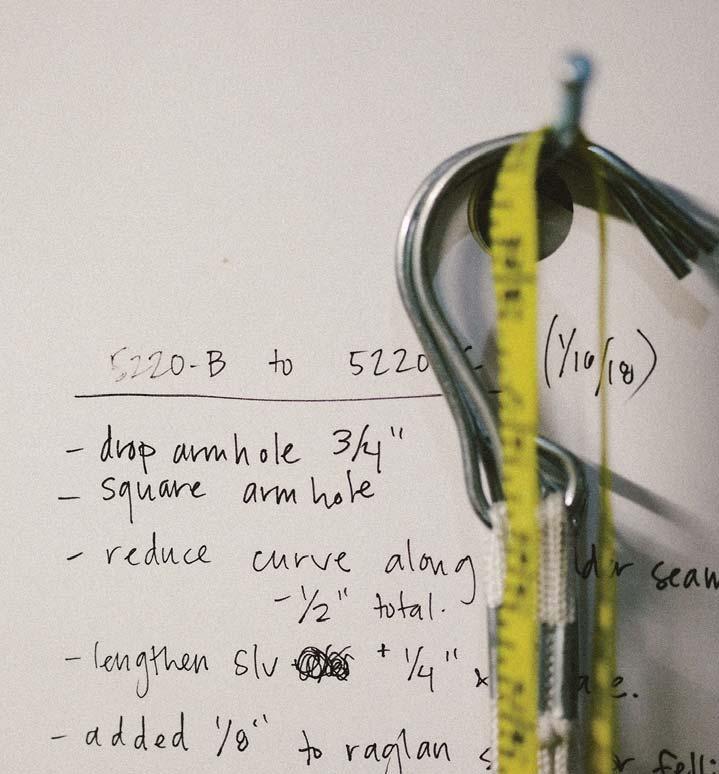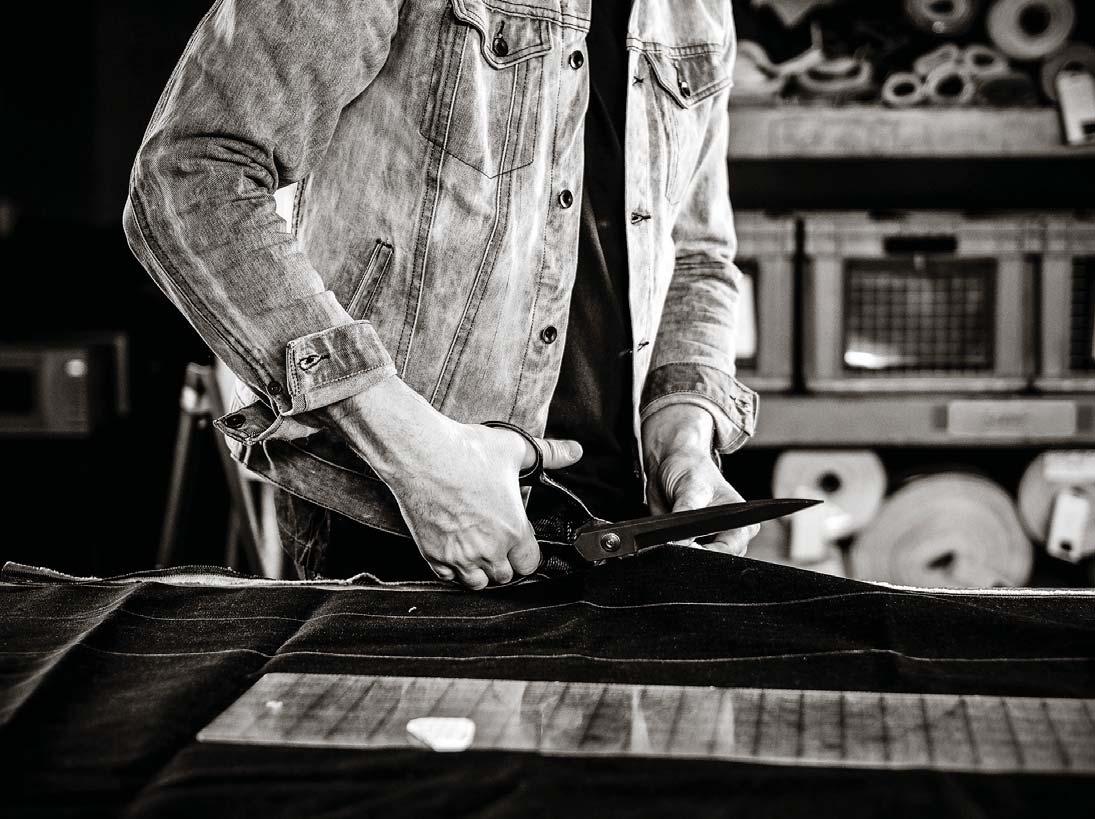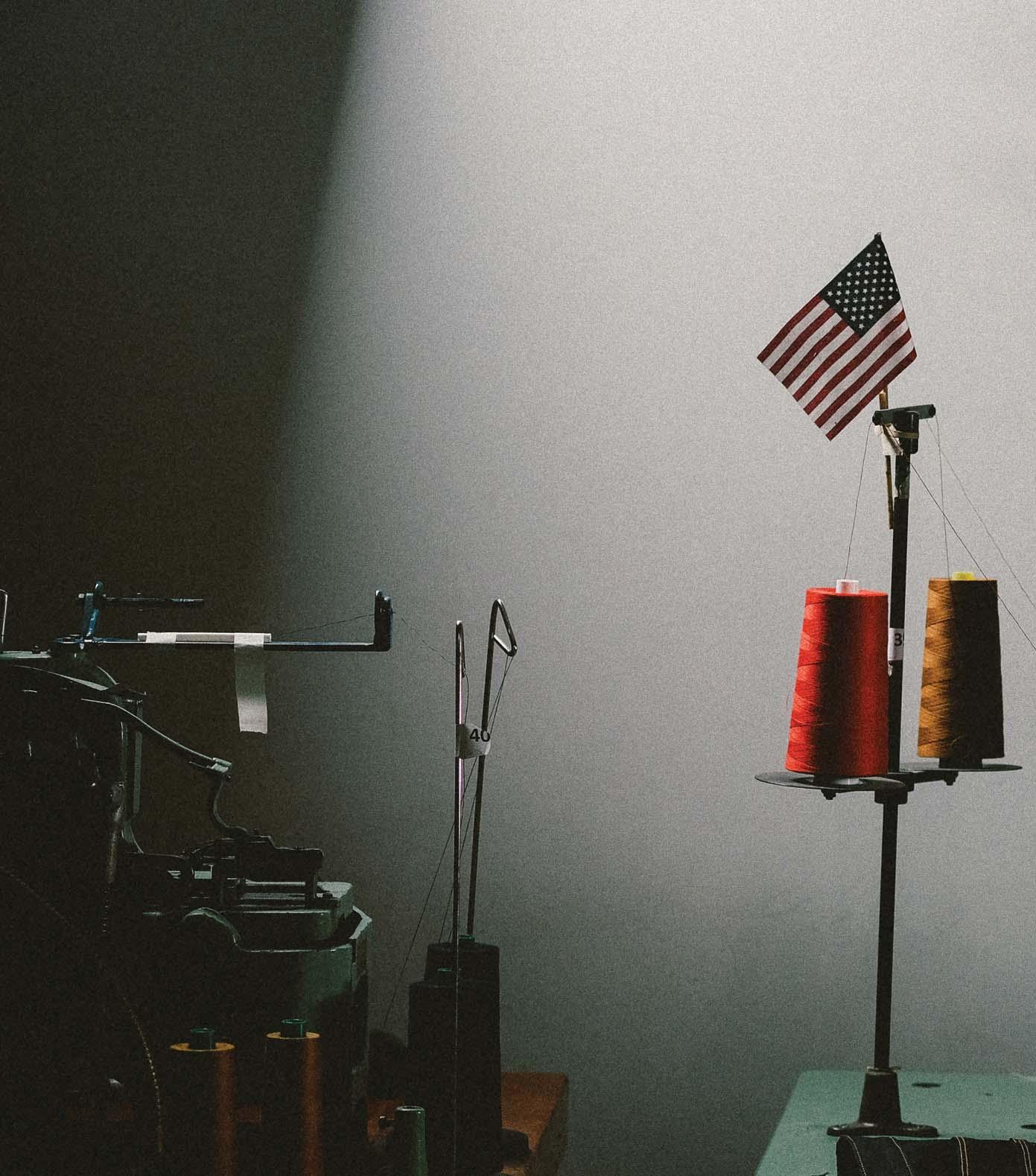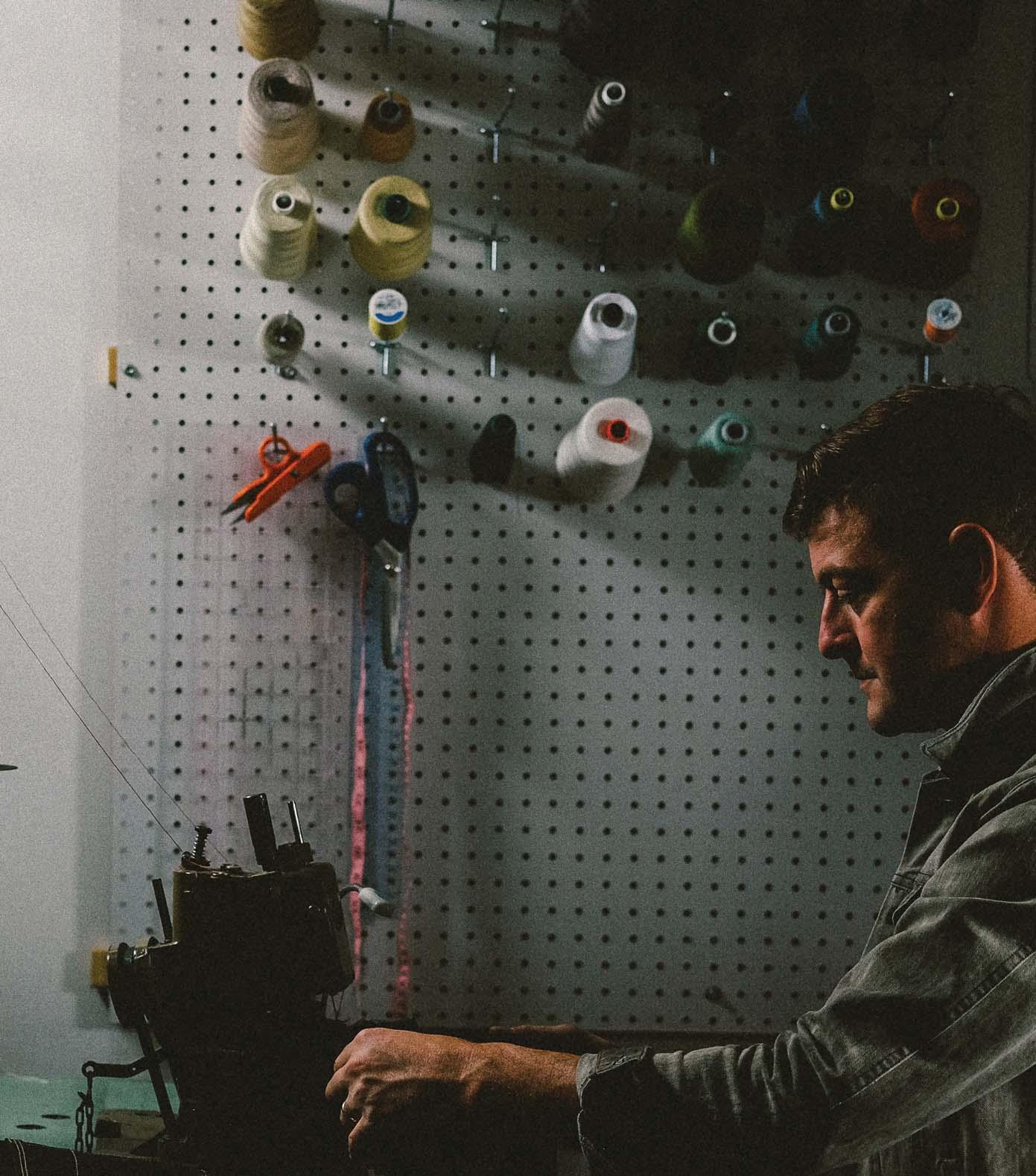
3 minute read
Denim Deconstructed
A peek into the process behind Raleigh’s venerable denim makers DENIM
DECONSTRUCTED
Advertisement
by AYN-MONIQUE KLAHRE photography by TIM LYTVINENKO
MORE THAN A FLOOR

“We are not the sum of the machines, but the machines are all part of one whole,” says Victor Lytvinenko. Here, an overview of the workshop, including cut fabric, ready to assemble into jeans.
DENIM INTO DESIGN
Victor Lytvinenko stands in front of rolls of denim, including a remaining few from nowclosed Cone Mills plant
in Greensboro. At right:
Patterns for garments hang at the ready.

Nestled in the Warehouse District, you’ll find an understated sign for the Raleigh Denim Workshop + Curatory. One of the original businesses in this now-booming corner of downtown, it’s still a cool-kid destination—and the place this internationally-acclaimed fashion brand calls its home. Raleigh Denim is both a storefront and a factory, though calling it a factory doesn’t do justice to the care and craftsmanship that goes into each pair of jeans. The brand was founded by husband and wife team Victor Lytvinenko and Sarah Yarborough more than 10 years ago in a former apartment, eventually expanding to their current location. At the company’s core, you’ll find jean geekiness: a team that obsesses over everything from selvedge edges to thread colors to the construction tools themselves. “I feel in love with machines that were made in the 1930s, 40s and 50s; they’re so well-made that we can still use them today,” Lytvinenko says. The reason? Authenticity. “We want to be connected to the process,” says Lytvinenko. He walked me through the workshop, where he knows each machine inside and out, and believes that these these handmade workhorses are the heart of the end product. I watched him open up a green clunker to rethread a needle, using tweezers to navigate the tiny strand through the tiny hole. Then he grabbed a bit of fabric to show me how it makes a buttonhole: In a few frightening seconds, the machine sewed an elongated teardrop, then sliced through its center, loud as a machine gun. He pulled it out to show off the red thread woven under the yellow, a technique that signals when extra care was required. It’s just one of the many details (two-pronged grommets, hand-drawn size charts, a design on the interior pockets) that makes their clothing line special. “From the beginning, we signed the jeans because we cut and sewed every pair, we wanted to forge that connection between the wearer and the maker,” Lytvinenko says. He speaks with pride of an early employee who’s still on the team, Rosendo Antigua, one of a handful—beyond Yarborough and himself—who’s earned the privilege of signing his name, as well. “There’s a ceremony, we call the whole company over to give them the Sharpie.” The point is: This is not a factory where people crank out widgets. “Everyone understands what comes before and after and is focused on quality and setting the next person up for success,” says Lytvinenko. It’s hard to leave the workshop without Lytvinenko’s pride rubbing off: Here, in our town, a team of skilled artisans prove that sometimes the best way forward is to call back the past; that sometimes the best way to grow is to put down roots where you’re planted. “The making happens in our minds and our hearts and our fingers,” he says. “What we’re doing here is magical.”


DETAILS, DETAILS
Clockwise from top left: A signed interior pocket; Rosendo Antigua working the buttonhole machine; Slicing denim with Wiss scissors (“My pattern-making mentor was very, very particular about these,” says Victor Lytvinenko); Red and yellow stitch details on the waistband; fit notes.


MAN AT WORK
Victor Lytvinenko sits at the hemming machine. “The center of the seam doesn’t line up—it’s actually a flaw in the machine—so it creates a twist along the bottom edge that looks like rope. There are thousands of other hemming machines but none of them do that,” he says. “On any other garment it would look like garbage, but on denim it highlights the depth of the indigo as it wears.” “The making happens in our minds and our hearts and our fingers. What we’re doing here is magical.”
—Victor Lytvinenko, co-founder, Raleigh Denim












